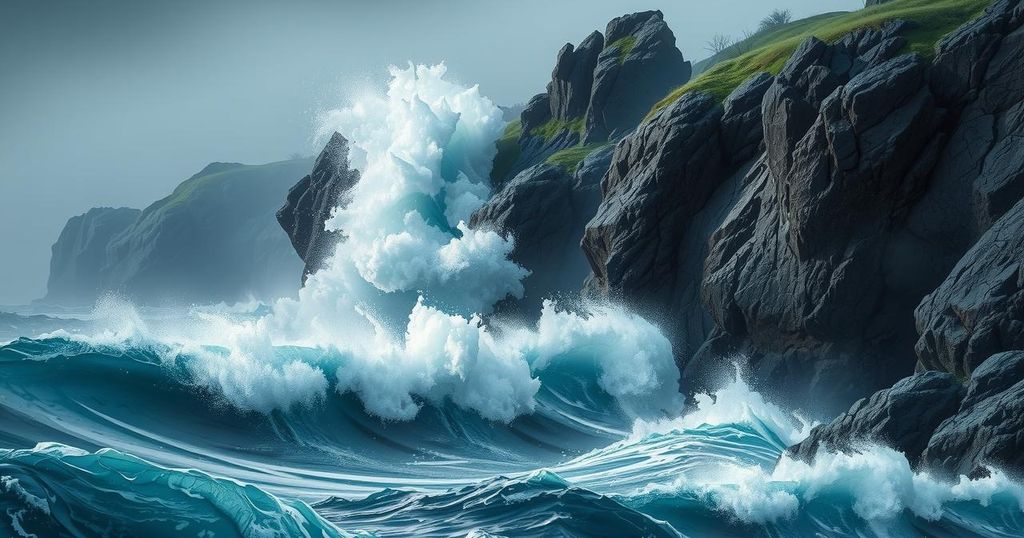Japan’s Looming Mega Earthquake Threat: An Overview of Risks and Preparedness

Japan faces a significant risk of a mega earthquake from the Nankai Trough, with an 80% chance of an 8 to 9 magnitude quake that could result in 300,000 deaths and economic losses of 270.3 trillion yen. Experts stress the importance of preparedness, while historical patterns reveal that such quakes may recur every century or so.
A recent Japanese government report warns of an 80% probability of a catastrophic 8 to 9 magnitude earthquake occurring in the Nankai Trough, potentially leading to massive tsunamis and infrastructure destruction. Experts predict that this mega earthquake could kill up to 300,000 individuals, with estimated economic losses reaching about 270.3 trillion yen, nearly half of Japan’s GDP. Given the recent seismic activity in neighboring regions, caution is warranted as Japan prepares for possible future disasters.
In the worst-case scenario of a magnitude 9 earthquake, projections indicate that roughly 1.23 million individuals, about 1% of Japan’s population, may need to evacuate. If the quake occurs late at night during winter, up to 298,000 deaths could result due to tsunami waves and falling debris. Previous advisories from the government have highlighted an increased likelihood of such megaquakes following smaller tremors in the vicinity, underscoring the need for public awareness and preparedness.
The Nankai Trough, a significant underwater fault line, runs approximately 900 km along Japan’s southwestern coast. It is a site of tectonic subduction where the Philippine Sea Plate descends beneath the Eurasian Plate, creating immense pressure and resulting in seismic instability. Historical data suggests that major earthquakes in this region recur approximately every 100 to 150 years, with past events reinforcing concerns about an impending disaster.
Japan is uniquely vulnerable to such seismic threats due to its position on four tectonic plates, making it highly prone to earthquakes and tsunamis. Experts cite that more plate boundaries in an area increase the likelihood of seismic interactions. Japan experiences nearly 1,500 earthquakes annually, contributing to its reputation as a hotspot for geological instability. The surrounding “Ring of Fire” further exacerbates this risk, accounting for 80% of the world’s earthquakes and a significant portion of its tsunamis, driven by intense volcanic activity and tectonic shifts.
The prospect of a mega earthquake along the Nankai Trough poses a serious threat to Japan, with substantial potential loss of life and economic ramifications. Current calculations indicate an 80% chance of such an event occurring in the foreseeable future, compelling authorities to stress the importance of emergency preparedness. Understanding the region’s seismic activity patterns and historical data can aid in mitigating risks associated with this imminent danger, ensuring public safety and resilience.
Original Source: www.news18.com







